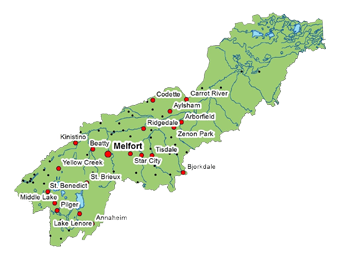Who is the CRVWA and what do we do?
We are often mistaken for the Water Security Agency (WSA)…and by often, we mean, at least a couple times a week. We think the most likely reason is because that agency formerly was called the Saskatchewan Watershed Authority. Many referred to them as the “Watershed Authority” or even just “Watershed”, and that name has stuck with people despite the fact that they officially changed their name in 2012. This mistaken identity does lead to some pretty interesting discussions, and sometimes brings us some projects, but most often adds to the frustration that has led the individual to contact us in the first place.
Recently, WSA created an informational fact sheet that outlines the key differences between Watershed Stewardship Groups (that’s us!), Conservation & Development Area Authorities (C&Ds) and Watershed Associations. You can find this fact sheet here WSA – Types of Water Management Groups. This fact sheet is a great resource to help explain the differences between these three groups.
In a nutshell, Watershed Stewardship Groups are non-profit, grassroots organizations, driven by local stakeholders and members which include Urban and Rural Municipalities, and special interest groups, such as C&Ds, Regional Parks, local Wildlife Federations, etc. These groups originally formed to drive watershed based source water protection planning and projects, and work on a wide variety of stewardship based programming ranging from invasive species to shoreline stewardship. Watershed Stewardship Groups focus on protecting and preserving our watersheds through education and awareness. Core funding for the 11 Watershed Stewardship Groups comes from the WSA, but the groups actively seek out grants, solicit memberships, and work with partners to secure funding to implement projects within their local areas. Provincially, the Watershed Stewardship Groups are represented y the Saskatchewan Association of Watersheds.
On the other hand, Watershed Associations function much more like a C&D. Watershed Associations are a form of local government, can charge a levy, and fall under the legal authority of The Watershed Associations Act. Members of Watershed Associations include Rural and Urban Municipalities, C&Ds and Irrigation Districts that have come together to work together on issues including flooding.
Conservation & Development Area Authorities (C&Ds) are also a form of local government, can charge a levy, and fall under The Conservation & Development Act. C&Ds are made up of private landowners, most often farmers, that have come together to address issues of drainage, flooding and erosion. According to WSA, there are approximately 90 active C&Ds in Saskatchewan.
You can learn more about how to form a Watershed Association or C&D, what activities are considered drainage (a topic for another day), and more on the WSA website.
Species at Risk in Saskatchewan
Species at Risk are plant or animal species that have populations that are declining to the point of disappearing all together. These species are often sensitive to human activity and natural events, and require careful consideration and management to ensure their survival and protection. The Saskatchewan Species at Risk Farm Program from SimplyAg Solutions Inc. works to help protect, enhance, and increase awareness of species at risk on farms in Saskatchewan; enables producers to complete a voluntary and confidential farm self-assessment to develop a Species at Risk Farm Action Plan; and provides producers the opportunity to accessing funding through the Saskatchewan Species at Risk Farm Program. You can learn more about the “target species” for this program at http://simplyag.ca/target-species/.
In partnership with SimplyAg Solutions Inc., we are hosting a Species at Risk (SAR) Workshop on Thursday, March 23, 2017 from 9am to 4pm at our office in Melfort. This free workshop is open to producers that are interested in learning about Species at Risk in Saskatchewan. This workshop will provide details on identification techniques, how to determine which SAR habitat you have on your farm and ranch and how you can manage for SAR while benefiting your farm or ranch operation. You will have the opportunity to complete a farm/ranch assessment where you will identify the different habitat types on your farm or ranch and work through an action plan where you will work through some species specific BMPs. You can find out more about the Saskatchewan Species at Risk Farm Program at http://simplyag.ca/brochure/ or by contacting our local program representative.
For more details and to register, please contact Morgan Leigh, Saskatchewan Species at Risk Farm Program Representative, at 306-921-6631.

